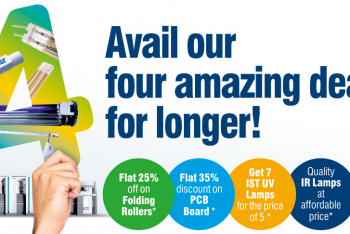Orbytel Completes Package Printing Offering with New Speedmaster XL 75 UV
“We always have been intent on growth,” said company president Mark Uvlin, citing the company’s 50-year history and 20-year evolution from print broker to manufacturer. Founded in 1964, the company bought its first rollfed digital press and commenced the in-house production of short-run pressure-sensitive labels in run lengths from 500 to 100,000 with versioning in 2004. It later expanded into flexible and rigid digital wide-format display work and flexible film packaging. Today, Orbytel’s services range from CAD design and prototyping to labels and flexible packaging, to retail displays and signage created for customers in the food and beverage, consumer products, cosmetic and chemical industries.
Of Orbytel’s decision to expand into robust folding carton production, Uvlin said, “As experts in the product label field, we were ready to expand into the carton market. It was a natural fit.” The new Speedmaster XL 75 UV will enable Orbytel to go after the larger, “meatier” carton and display work the company couldn’t handle with its digital equipment, he explained. “We already knew that many of our customers had channels of distribution for their products and needs across all three of our product lines.”
New Tools
Given Orbytel’s interest in providing fast, flexible, value-added solutions to its customers, the XL 75’s high-end DryStar UV system will help Orbytel open the door to new customer segments and profitable growth, including printing on plastic and other non-standard substrates. Fully integrated into the press at the factory, the DryStar UV features CoolCure technology that speeds production, shortens wait times, and significantly improves print quality when working with temperature-sensitive materials. Thanks also to Heidelberg’s CANopen technology, DryStar UV dryers are operated centrally at the Prinect Press Center. Instant Start UV permits the UV dryer to remain in standby mode during blanket and impression cylinder washups, eliminating long waits and promoting longer UV lamp life, with the potential to boost productivity up to 25 percent. The company also has the option to run in low-energy UV (LE UV) mode on less heat-sensitive substrates, should the need arise.
“UV is the most exciting feature of the new press. It also presents a significant learning curve,” Uvlin said. “Our previous experience with UV was limited to flood coating our digital products. Between getting used to our new offset workflow and mastering the art of UV printing, we have a lot of work to do,” he acknowledged, “but we look forward to the challenge and to making the most of the efficiencies we’ve gained. Heidelberg has given us the tools we needed to expand and succeed.”




LEAVE A REPLY